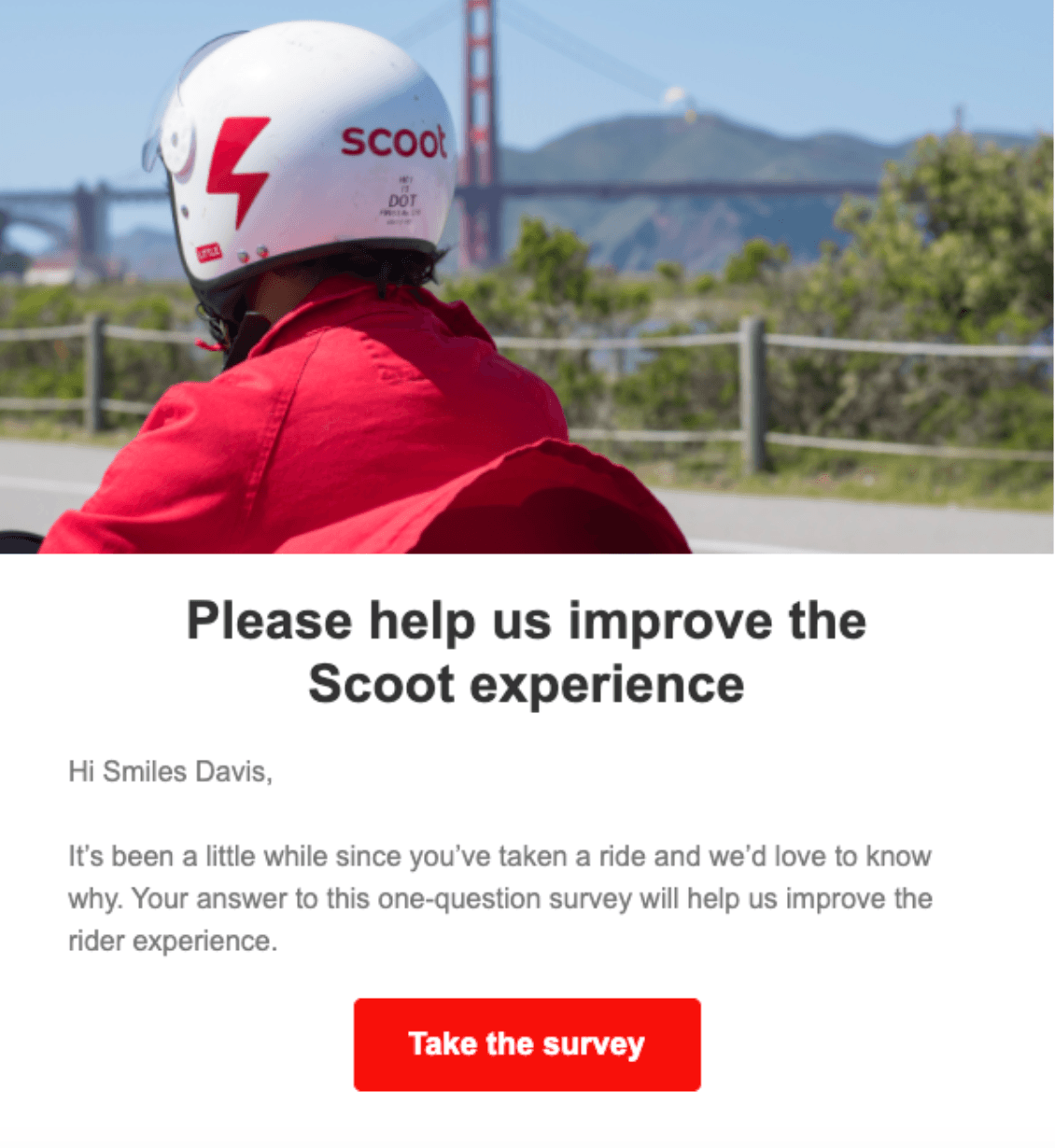-
 Published: Jun 26, 2023
Published: Jun 26, 2023
-
 13 min. read
13 min. read
-
 Macy Storm
Macy Storm Content Marketing Consultant
Content Marketing Consultant
- Macy is a content marketing consultant with over five years of experience creating content for dozens of industries including home services, recreation, and education. She’s written about every marketing topic under the sun, from SEO to AI to email marketing. Her work has been featured by Search Engine Journal, HubSpot, Entrepreneur, Clutch, and more. In her free time, Macy enjoys crafting, reading comic books, and walking her dog Daisy.
Did you know that 65% of business revenue comes from existing customers who know your brand? Loyal and repeat customers play a significant role in helping your business increase revenue and grow. That’s why it’s critical to track customer retention metrics and gain a better understanding of how you retain customers.
Customer retention metrics help you measure your business’s ability to maintain loyal customers and the value of those customers.
But what do you track?
On this page, we’ll provide you with all you need to know about customer retention, including:
Keep reading to learn more, and don’t forget to subscribe to our email newsletter to get the latest tips and tricks for earning and keeping more customers!
Don’t miss our Marketing Manager Insider emails!
Join 200K smart marketers for the hottest marketing news and insights in your inbox.
Inline Subscription Form
“*” indicates required fields


10 customer retention metrics you’ll want to analyze
When you do retention tracking, you’ll want to analyze specific metrics to determine how well you retain customers. Here are 10 customer retention metrics you can track:
- Customer retention rate
- Customer churn rate
- Repeat purchase ratio
- Net promoter score
- Customer lifetime value
- Time between purchases
- Product return rate
- Customer satisfaction score
- Monthly recurring revenue
- Revenue churn rate
Read on to learn more about these metrics!
1. Customer retention rate
With retention tracking, you can track your customer retention rate by seeing how many customers you maintain during a specific period.
To find your customer retention rate, use the following formula:
(Total number of customers at the end of a period – New customers acquired) / Customers at the start of the period = retention rate
When you plug in your numbers, you’ll discover your customer retention rate.
For example, if you started a period with 200 customers, acquired 10 new ones, and ended with 195 customers, it would look like this:
(195-10)/200 = .925
.925 x 100 = 92.5%
In this example, your customer retention rate would be 92%.
By tracking this metric, you understand if you maintained or lost customers. It’s a great metric to monitor to have an overview of your retention rate.
2. Customer churn rate
Next on our list of customer retention metrics is customer churn rate, which measures how many people stop interacting with your business. Generally, they either stop buying products, stop using your services, or cancel their subscription.
To calculate customer churn rate, use the following formula for your period of choice:
Number of people who stopped being customers/number of customers at the beginning = churn rate
Your churn rate will help you understand continued customer loyalty. Ideally, you want a churn rate close to 0%. A high churn rate means more people stop buying your products or using your services.
Tracking this metric will help you understand if you’re losing loyal, repeat customers, so you can adjust your strategies to keep those customers.
3. Repeat purchase ratio
When measuring customer retention, you’ll want to look at repeat purchase ratio. As the name indicates, this metric helps you track how many customers buy from your company multiple times.
The formula for finding your repeat purchase ratio is simple:
Number of returning customers/ number of total customers = repeat purchase ratio
This formula will help you understand how many people return to your business and buy again within your customer base.
So, for example, if you have 100 customers purchasing again out of 200 total customers, your repeat purchase ratio is 50%.
Repeat purchase ratio shows how many people keep returning to your business. You want a high repeat purchase ratio because it indicates that people like what you offer and want to buy again, resign their contract, or renew their subscription.
4. Net Promoter Score (NPS)
When looking at customer retention metrics, a common one you’ll see tracked is Net Promoter Score (NPS). This metric focuses on customer satisfaction and shows how likely people are to recommend your business to others.
Here’s how to get your NPS:
% of Promoters – % of Detractors = Net Promoter Score
This metric is excellent for understanding how your customers feel about your brand and their loyalty to it.
If you find you have a low NPS, you can use this data, in conjunction with revenue churn rate, to better understand what causes people to leave your business or have a negative perception of it.
Want to calculate your NPS score? Use our free NPS calculator!
5. Customer lifetime value (CLV)
Customer lifetime value (CLV) is one of the most critical user retention metrics to track. This metric shows the revenue you generated from a single customer. It’s an individualistic way to look at your customers and understand how much revenue they generate for your business.
To calculate CLV, you must first calculate the customer value. Your customer value involves multiplying the average number of purchases by the average value of those purchases:
Average purchase value x average number of purchases = customer value
Once you have your customer value, you can figure out your CLV using this formula:
Customer value x Average customer lifespan = CLV
Multiplying the value of your customers by how long people stay customers of your business will help you understand the value of your customers for that period.
You want to see your CLV stay consistent or increase because it indicates you obtain high-value customers that stick with your business in the long run. A decreasing CLV shows that you are either losing customers faster or aren’t acquiring high-value ones.
By adding CLV to your retention tracking metrics, you’ll better understand the types of customers you attract and their value to your business.
6. Time between purchases
Next on this list of customer retention metrics is time between purchases. Tracking this metric helps you see the average time it takes for a customer to purchase from you again.
To find the time between purchases for your business, use the following formula:
Total individual purchase rates / number of repeat customers = time between purchases
When calculating the time between purchases, you must factor in your business’s offerings and model. If you sell a subscription-based product, your time between purchases will likely be a month at minimum. For a clothing store, however, repeat purchases could happen just hours after the last purchase.

Additionally, if you sell a product in bulk or something more expensive, the time between purchases may be longer due to the product’s longevity or cost.
By calculating this metric, you’ll better understand how happy customers are with your products or services. It also indicates how you stack up against your competition and your customers’ willingness to check out other competitors.
7. Product return rate
If you want to know how to measure customer retention effectively, try looking at product return rate. Product return rate helps you compare how many products you sold to how many were sold and returned.
Returning products isn’t unusual for customers –– 25% of consumers return between 5-15% of what they buy online, while 16% return 30-50% of what they buy online. It’s essential to track your product return rate to understand the percentage of customers taking back their products.
Here’s the formula to calculate product return rate:
Number of units sold that were returned / Total number of units sold = product return rate
With product return rate, you better understand how many people made a purchase compared to those who returned their purchases.
Product return rate is great for helping you figure out how your audience receives your products. If you find that many people return your products, it may be a sign that your product isn’t offering what people need.
Tracking your product return rate will help inform your business on how to adjust your product development and advertising to reach the right customers.
8. Customer satisfaction score
When measuring customer retention, consider measuring your customer satisfaction score. A customer satisfaction score tells you how satisfied customers are with your company and what you offer.
There is no set formula to figure out customer satisfaction. The best way to understand customer satisfaction is to create a survey tailored to your company and what you deem as “success” in maintaining customers.

For example, a key component of your customer retention strategy may be your customer service. It would be a good idea to ask questions on your survey about customers’ experience with your customer services team.
The point scale and questions are up to you. You can ask five simple questions and use a 1-5 scale for a rating or have an elaborate survey with a multi-point system.
Your customer satisfaction score provides the flexibility of asking your prospects the questions that matter most, so you can get the information you need. By tracking customer satisfaction, you’ll stay on the pulse with how customers feel about your business and adapt to improve the customer experience.
9. Monthly recurring revenue (MRR)
When measuring customer retention, make sure you figure out your monthly recurring revenue (MRR). MMR refers to the revenue you get through your products or services each month.
You can calculate MRR using the following formula:
Average revenue per account x number of accounts in a month = MMR
When you put your numbers into this formula, you’ll learn your monthly revenue from loyal customers.
A high MRR indicates a good customer retention rate and a low customer churn rate. If your MMR is low, you’ll need to start working on improving your customer satisfaction and keeping customers engaged with your business.
10. Revenue churn rate
Last on this list of user retention metrics is revenue churn rate. Revenue churn rate is the amount of revenue lost from your existing customers. This churning occurs when someone cancels an order or ends their partnership with your company, resulting in a loss of revenue.
Here’s how to calculate revenue churn rate:
[(MRR at start of the period – MRR at the end of the period) – MRR in upsells and cross-sells during period]/ MRR at the start of month
Essentially, you’re looking at how your recurring revenue changed from beginning to end and factoring in any revenue you got from upselling or cross-selling other products.
Calculating your revenue churn rate will help you understand your customers at a granular level. You can see if you have a high number of customers who cut ties with your business and work to understand their problems better.
If people cancel and order or end their subscription, many companies will have a survey in place that asks why. People can select from a list of common answers, from “too expensive” to “doesn’t have what I need” or they can fill in their own responses.

You can create a survey like this for your customers and use it in combination with your revenue churn rate to better understand how much revenue you’re losing and what’s causing them to leave. This process will help you create new strategies to retain more customers.
How to measure customer retention
Now that you know what customer retention metrics to track, you must understand how to measure customer retention. Measuring how well you maintain customers is tricky because there isn’t one quick and easy solution or metric that tells you everything.
To measure customer retention, you must do the following:
- Have goals relevant to customer retention
- Determine metrics to track
- Set benchmarks
- Collect the data
Let’s dive more into those ideas below:
1. Have goals relevant to customer retention
Before you can start retention tracking, you must have goals. Setting goals is important for you to know if you’re achieving what you want with your customer retention. It also helps ensure you track the correct metrics.
When you set goals, make them SMART goals. SMART stands for:
- Specific
- Measurable
- Achievable
- Relevant
- Timely
So, what does it mean to set smart goals?
When you do retention tracking, your goals must be specific to customer retention and have a reasonable way to be measured. Additionally, you create feasible goals for your business, so you don’t set your team up for failure.
For example, if you set a goal to retain 50 new customers through the first quarter, but you average 10, it’s not a realistic goal. A more realistic goal might be 15 or 20.
Your goals will help guide which customer retention metrics you track, so you can measure your business’s success.
Keep in mind that success looks different to every company. That’s why you need to understand what your business wants to achieve and set retention goals around what you deem as “success” for your business.
2. Determine the metrics to track
Once you know your goals, you can focus on the customer retention metrics that will help you determine if you’re reaching your goals. When you have multiple goals, you’ll use numerous metrics to determine your success –– those metric combinations may differ depending on what you track.
If one of your goals is to reduce the percentage of lost customers, you may monitor a metric like churn rate. If you focus on increasing the value of each customer, you focus on metrics like CLV.
Determining your metrics will help you focus on the data that provides you with the most valuable insights.
3. Set benchmarks
In addition to determining the metrics you’ll track, you also want to set benchmarks. Benchmarks provide a point of reference so you can measure yourself against them to see if you progress and meet your goals.
You can use two types of benchmarks for customer retention. One option is industry benchmarks. These benchmarks can help you measure how you stack up to companies in your industry.
Industry benchmarks are good for helping you keep your business competitive, but these benchmarks shouldn’t be the only ones you have. If you only focus on industry benchmarks, you may wrongly assume your business isn’t successful with customer retention when it is.
That’s why you also want to set benchmarks personal to your business. Setting tailored benchmarks will help you measure your company’s individual success, so you can see if you’re improving your customer retention.
4. Collect the data
If you want to know how to measure customer retention successfully, you need to collect data. Your data will inform you about whether you’re reaching your goals and how customers interact with your company.
When looking at customer retention metrics, you must gather an abundance of data. If you have a small data set, it’s harder to see the big picture and make accurate conclusions. You need to collect as much data as possible to ensure you get a clear picture of your customer retention.
Using a customer relationship management (CRM) platform, like Nutshell, can help you gather all the data you need with ease.
Once you collect your data, you’ll analyze it to gain insights and adjust your customer retention strategy.
Need help measuring your customer retention?
Customer retention metrics are critical to track to ensure you keep customers engaged with your business. If you aren’t sure how to track customer retention, interpret your data, or adapt your strategy, WebFX can help.
At WebFX, we have a team of over 500 digital marketing experts that can help you improve your customer retention.
Want to know what it’s like to partner with us? Check out our 1,100 client testimonials to see what our clients say about the results we drive for them!
If you’re ready to improve your customer retention rate, contact us online or call us today at 888-601-5359 to speak with a strategist!
-
 Macy is a content marketing consultant with over five years of experience creating content for dozens of industries including home services, recreation, and education. She’s written about every marketing topic under the sun, from SEO to AI to email marketing. Her work has been featured by Search Engine Journal, HubSpot, Entrepreneur, Clutch, and more. In her free time, Macy enjoys crafting, reading comic books, and walking her dog Daisy.
Macy is a content marketing consultant with over five years of experience creating content for dozens of industries including home services, recreation, and education. She’s written about every marketing topic under the sun, from SEO to AI to email marketing. Her work has been featured by Search Engine Journal, HubSpot, Entrepreneur, Clutch, and more. In her free time, Macy enjoys crafting, reading comic books, and walking her dog Daisy. -

WebFX is a full-service marketing agency with 1,100+ client reviews and a 4.9-star rating on Clutch! Find out how our expert team and revenue-accelerating tech can drive results for you! Learn more
Try our free Marketing Calculator
Craft a tailored online marketing strategy! Utilize our free Internet marketing calculator for a custom plan based on your location, reach, timeframe, and budget.
Plan Your Marketing Budget

Proven Marketing Strategies

Proven Marketing Strategies
Try our free Marketing Calculator
Craft a tailored online marketing strategy! Utilize our free Internet marketing calculator for a custom plan based on your location, reach, timeframe, and budget.
Plan Your Marketing Budget
What to read next





